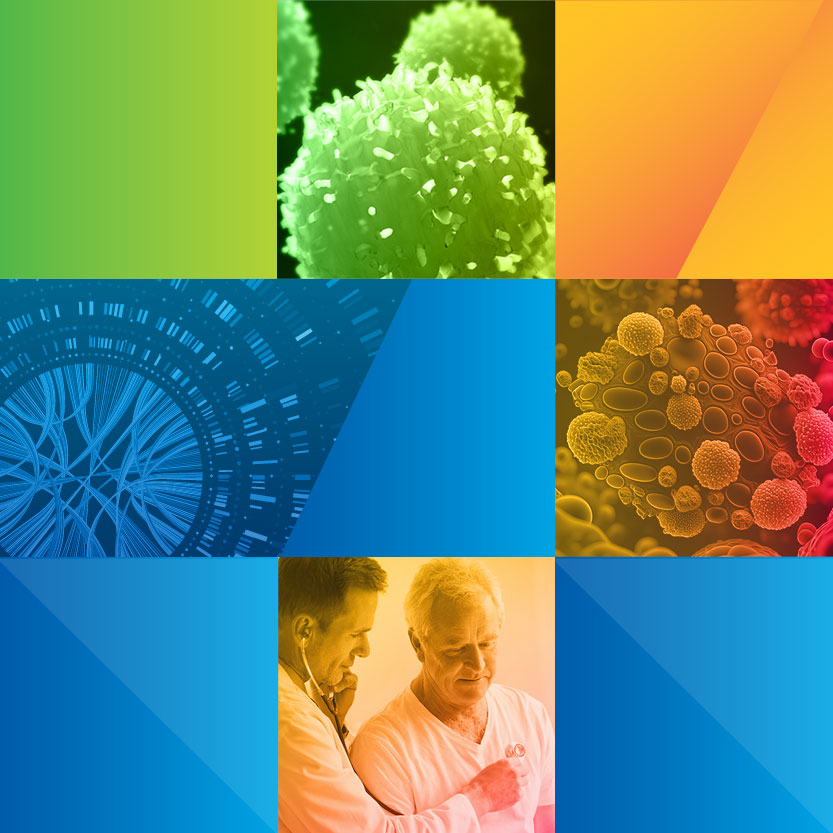Researchers discuss the origins and significance of extrachromosomal DNA
//
Estimated Read Time:
Cancer is an evolutionary puzzle. Many tumors respond quickly to changing environmental conditions, developing resistance to treatment agents and forming metastases. One of the mechanisms behind this evolutionary plasticity and success may be extrachromosomal DNA (ecDNA).

“Pan-cancer analysis shows the high frequency of ecDNA across many cancer types,” said Roel Verhaak, PhD, of the Jackson Laboratory for Genomic Medicine. “ecDNA has been detected in 14 percent of tumor types, ranging from 56 percent of glioblastomas to 49 percent of sarcomas, 41 percent of esophageal cancers, and 40 percent of ovarian cancers. The presence of ecDNA associates with poor patient survival.”
Verhaak chaired and presented the first lecture in the major symposium Extrachromosomal DNA: Origins and Significance on Sunday, April 10. The symposium can be viewed on the virtual platform by registered meeting participants through July 13, 2022.
ecDNA is a circular DNA element, 50 kb to 5 Mb in length, that does not contain centromeres and acts as a mechanism for the amplification of oncogenes and oncogenic elements. And because they have no centromeres, ecDNA can segregate unequally during mitosis to create more genetic variation than is expected during normal cell division.

“Circular DNA favors rapid change, and ecDNA favors rapid cancer evolution, rearranging chromosomes whenever needed,” said Paul S. Mischel, PhD, of Stanford University.
There are abundant active histone marks on ecDNA and few repressive chromatin marks, Mischel explained. Gene regulation is spatial and the circular structure enhances accessibility to the transcriptional machinery of tumor cells, creating new patterns of gene regulation, he added.
“For people with cancer, ecDNA is a major problem. It is linked to the most aggressive tumors and resistance to all current targeted, immunologic, and cytotoxic treatments. And ecDNA is unique to cancer cells. It does not appear to exist in normal tissues,” Mischel said.
The activities of ecDNA shape each step in cancer evolution, heredity, variation, and selection, to help tumor cells adapt more rapidly to changing condition. “We think cancer cells can change their genome within one or two cell cycles,” Mischel said.
On the positive side, understanding the structure and mechanisms of ecDNA opens new therapeutic possibilities and targets. The key, Mischel said, is to identify and target vulnerabilities in the creation of ecDNA, its unique structure within tissues, and each step in its activity.

These small, circular structures are highly interactive with chromosomes, added Chia-Lin Wei, PhD, of the Jackson Laboratory for Genomic Medicine. Interactions focus on specific chromosomal regions that are rich in enhancement signatures. The interactions are enabled by the altered structure of ecDNA that enables ecDNA to connect with, and modify, specific chromosomal regions.
“One hallmark of cancer is structural variation,” Wei said. “Organization can predispose the genome to greater variation. We see ecDNA behaves like a mobile enhancer that represents a new-to-us mechanism of transcription regulation in cancer. But it is not new in biology.”
The spatially reorganized interaction seen in ecDNA is similar to the interchromosomal interactions in olfactory receptors or host-virus regulatory interactions. Cancer cells have somehow developed or learned the same strategy to enhance their genetic variability to improve their likelihood of evolutionary success.
“What we do know is that circular DNA is a source of regulatory modules, gene copy number, intermediates of DNA transposition, and the modulation of gene transcription activity that can increase somatic mosaicism,” Wei said.




